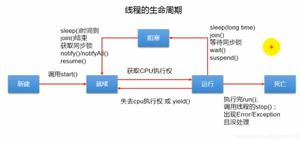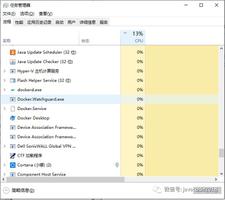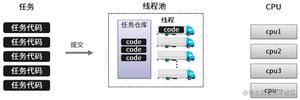【翻译二】java--并发之进程与线程

Processes and Threads
In concurrent programming, there are two basic units of execution: processes and threads. In the Java programming language, concurrent programming is mostly concerned with threads. However, processes are also important.
A computer system normally has many active processes and threads. This is true even in systems that only have a single execution core, and thus only have one thread actually executing at any given moment. Processing time for a single core is shared among processes and threads through an OS feature called time slicing.
It\'s becoming more and more common for computer systems to have multiple processors or processors with multiple execution cores. This greatly enhances a system\'s capacity for concurrent execution of processes and threads — but concurrency is possible even on simple systems, without multiple processors or execution cores.
Processes
A process has a self-contained execution environment. A process generally has a complete, private set of basic run-time resources; in particular, each process has its own memory space.
Processes are often seen as synonymous with programs or applications. However, what the user sees as a single application may in fact be a set of cooperating processes. To facilitate communication between processes, most operating systems support Inter Process Communication (IPC) resources, such as pipes and sockets. IPC is used not just for communication between processes on the same system, but processes on different systems.
Most implementations of the Java virtual machine run as a single process. A Java application can create additional processes using a ProcessBuilder object. Multiprocess applications are beyond the scope of this lesson.
Threads
Threads are sometimes called lightweight processes. Both processes and threads provide an execution environment, but creating a new thread requires fewer resources than creating a new process.
Threads exist within a process — every process has at least one. Threads share the process\'s resources, including memory and open files. This makes for efficient, but potentially problematic, communication.
Multithreaded execution is an essential feature of the Java platform. Every application has at least one thread — or several, if you count "system" threads that do things like memory management and signal handling. But from the application programmer\'s point of view, you start with just one thread, called the main thread. This thread has the ability to create additional threads, as we\'ll demonstrate in the next section.
« Previous • Trail • Next »
译文:
进程与线程
在计算计算机程序设计过程中,有两个基本的执行单元:进程和线程。在java语言中,并发主要指的是线程,但是进程也非常重要。
一个计算机系统通常有很多活动的线程和进程。准确的说在系统中有且只有一个核心的执行程序,在任何一个确定的时间里有且只有一个线程在执行。一个单核的执行周期被很多的进程和线程通过操作系统的时间片特性所共享。
对于计算机操作系统来说,多处理器或者多核已经变得越来越普遍。这大大加强了操作系统并发执行进程和线程的能力,但是即使是在单核单处理器上并发也是可以实现的,这并不需要多处理器或者多核。
进程
一个进程有它自己的执行环境。一个进程通常有一个完整的,基本的运行资源私有集合,特别的,没一个进程有它独自的内存空间。
进程往往被视作应用程序的代名词。然而,用户看到的单个应用可能是多个进程的集合。为了便于进程之间通信,许多操作系统都支持内部进程间通信(IPC),例如管道(pipe)和套接字(socket),IPC不仅是指进程在同一个操作系统之间通信,同时也支持不同的操作系统之间的通信。
大多数基于java虚拟机的应用程序是单进程的。一个java程序能够通过processbuilder对象来增加进程。多进程的应用程序超出了本课程。
线程
线程有时候被称作轻量级的进程。进程和线程都提供了一个可执行的环境,但是线程相比进程需要较少的资源。
线程包含于进程之中——没一个进程至少需要一个线程。线程共享进程的资源,包括内存,打开的文件。这使得通信是高效而且隐蔽的。
多线程是java平台的一个基本特征。每一个程序至少有一个线程,如果算上系统的内存管理,信号通信等线程的话那么会更多。但是从一个程序员角度来看,你只开启一个了线程,叫做主线程。这个线程具有创建新线程的能力,我们下节再介绍。
以上是 【翻译二】java--并发之进程与线程 的全部内容, 来源链接: utcz.com/z/394942.html







